Items filtered by date: December 2022
How Can I Prevent Toenail Fungus?
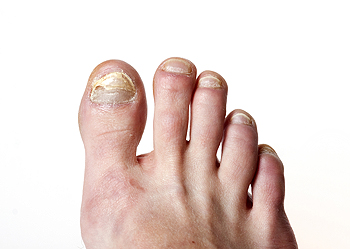
Toenail fungus is undoubtedly an unpleasant, unsightly, and potentially uncomfortable condition that can affect just about anyone. Since this condition can make the nails appear discolored and in bad form, many patients of podiatrists are curious about how they might go about preventing toenail fungus from developing. The good news is that there are several steps that an individual might take to prevent toenail fungus. If a patient uses antifungal sprays or powders, then this might significantly improve the patient’s resistance to developing a toenail fungus. Additionally, when a person properly cares for their nails, this can significantly help protect the nails from becoming infected. This includes properly cutting the nails, and ensuring that they are clean. If you are worried about preventing toenail fungus, you can make an appointment with a podiatrist today. This foot specialist will help you address your problems.
For more information about treatment, contact Kinna Patel, DPM of Sava Podiatry & Wellness Centers. Our doctor can provide the care you need to keep you pain-free and on your feet.
Toenail Fungus Treatment
Toenail fungus is a condition that affects many people and can be especially hard to get rid of. Fortunately, there are several methods to go about treating and avoiding it.
Antifungals & Deterrence
Oral antifungal medicine has been shown to be effective in many cases. It is important to consult with a podiatrist to determine the proper regiment for you, or potentially explore other options.
Applying foot powder on the feet and shoes helps keep the feet free of moisture and sweat.
Sandals or open toed shoes – Wearing these will allow air movement and help keep feet dry. They also expose your feet to light, which fungus cannot tolerate. Socks with moisture wicking material also help as well.
If you have any questions please feel free to contact our office located in Smyrna, GA . We offer the newest diagnostic tools and technology to treat your foot and ankle needs.
Ligaments Are Affected by Ankle Sprains
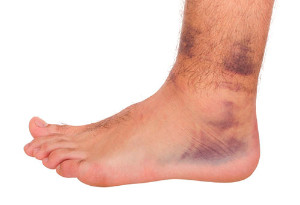
Many people sprain their ankles, and it can range from mild to severe. A common reason why people sprain their ankles is by suddenly stepping off of a step, or from falling and twisting it beyond its normal range of motion. Athletes may frequently experience this type of injury, which can happen as a result of running on uneven surfaces, or from landing awkwardly after jumping. Despite how painful an ankle sprain can be, the bone is not injured. The pain comes from ligaments that have become stretched too far, and may become partially or completely torn. There are two types of ankle sprains that can typically occur, and these are known as the inversion or eversion sprain. The former is considered to be the most common type of ankle sprain, and pain is felt on the outside of the ankle. Conversely, an eversion sprain happens when the ankle twists outward, causing pain on the inside of the ankle. If you have endured a sprained ankle, please consult with a podiatrist who can determine which type of sprain you have, and offer you relief and treatment options.
Ankle sprains are common but need immediate attention. If you need your feet checked, contact Kinna Patel, DPM from Sava Podiatry & Wellness Centers. Our doctor can provide the care you need to keep you pain-free and on your feet.
How Does an Ankle Sprain Occur?
Ankle sprains take place when the ligaments in your ankle are torn or stretched beyond their limits. There are multiple ways that the ankle can become injured, including twisting or rolling over onto your ankle, putting undue stress on it, or causing trauma to the ankle itself.
What Are the Symptoms?
- Mild to moderate bruising
- Limited mobility
- Swelling
- Discoloration of the skin (depending on severity)
Preventing a Sprain
- Wearing appropriate shoes for the occasion
- Stretching before exercises and sports
- Knowing your limits
Treatment of a Sprain
Treatment of a sprain depends on the severity. Many times, people are told to rest and remain off their feet completely, while others are given an air cast. If the sprain is very severe, surgery may be required.
If you have suffered an ankle sprain previously, you may want to consider additional support such as a brace and regular exercises to strengthen the ankle.
If you have any questions please feel free to contact our office located in Smyrna, GA . We offer the newest diagnostic and treatment technologies for all your foot and ankle needs.
How to Exercise for Weight Loss With Foot Pain
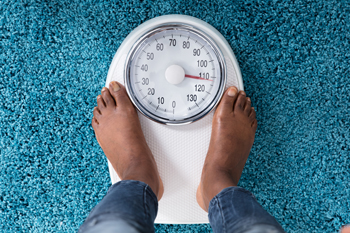 Different people will respond to different exercise regimens when they want to lose weight and are challenged with foot problems. Beyond figuring out which exercises will work best, it may be hard to stay motivated. Pilates is one such program that can provide a total body workout of strength and flexibility while not taxing the feet. Swimming can also be a good alternative to the weight-bearing of traditional walking or running to lose weight. Weight training, and a program that incorporates at least one exercise for each direction that the joints of the body move should be sought. If you are having trouble losing weight because you suffer from foot pain, it is suggested that you seek evaluation and treatment from a podiatrist. The quicker the core issue is tended to, the faster and easier it will be to get back to exercising and lose unwanted weight.
Different people will respond to different exercise regimens when they want to lose weight and are challenged with foot problems. Beyond figuring out which exercises will work best, it may be hard to stay motivated. Pilates is one such program that can provide a total body workout of strength and flexibility while not taxing the feet. Swimming can also be a good alternative to the weight-bearing of traditional walking or running to lose weight. Weight training, and a program that incorporates at least one exercise for each direction that the joints of the body move should be sought. If you are having trouble losing weight because you suffer from foot pain, it is suggested that you seek evaluation and treatment from a podiatrist. The quicker the core issue is tended to, the faster and easier it will be to get back to exercising and lose unwanted weight.
Obesity has become very problematic at this point in time and can have extremely negative effects on the feet. If you’re an obese individual and are concerned about your feet, contact Kinna Patel, DPM from Sava Podiatry & Wellness Centers. Our doctor can provide the care you need to keep you pain-free and on your feet.
Obesity and Your Feet
Since your feet are what support your entire weight when standing, any additional weight can result in pain and swelling. Being overweight is one of the main contributors to foot complications.
Problems & Complications
Extra Weight – Even putting on just a few extra pounds could create serious complications for your feet. As your weight increases, your balance and body will shift, creating new stresses on your feet. This uneven weight distribution can cause pain, even while doing the simplest tasks, such as walking.
Diabetes – People who are overweight are at serious risk of developing type-2 diabetes, which has a drastic impact on the health of your feet. As you get older, your diabetes might worsen, which could lead to loss of feeling in your feet, sores, and bruises. You could also become more prone to various infections.
Plantar fasciitis – Pressure and stress that is placed on muscles, joints, and tendons can trigger plantar fasciitis, which is an inflammation of tissue that forms along the bottom of the foot.
If you have any questions please feel free to contact our office located in Smyrna, GA . We offer the newest diagnostic and treatment technologies for all your foot and ankle needs.
Dr. Patel appointed Temple University's newest Board Member

Alumni interview with Dr. Kinna Patel '11
Written By Robert Simons CLA '21 Meet TUSPM's newest Alumni Association Board Member, Dr. Kinna Patel.
Temple University welcomes Dr. Kinna Patel as the newest board member. Dr. Patel was drawn to Temple University for its’ strong academics and clinic. She continues to give back to the community and hopes to develop a mentorship program for current medical students and residents. Check out Dr. Patel’s full interview here: https://podiatry.temple.edu/interview-dr-kinna-patel-11
Shoes Matter!

I talk a lot about the importance of shoes here because they REALLY make a difference. The wrong shoe can not only hurt your feet while you’re wearing it, but continuous use can cause foot deformities like bunions, hammertoes, and tendinitis.
You want to avoid shoes that are too narrow or pointed at the front. I always recommend that if you absolutely must wear those types of shoes, do so for very short periods. Both men’s and women’s dress shoes can cause deformities, and while you may not notice it immediately when wearing the shoe, the daily damage will add up!
The best care is preventative care: avoid wearing shoes that don’t feel good for you, no matter how cute or sexy they look!
Expert Tips On Choosing Comfortable Work Shoes

This month, our very own Dr. Patel was featured on the Care and Wear website for her expertise on preventing foot pain. Care and Wear works with not only clinicians, but designers such as Oscar De La Renta to create healthwear products of the highest quality and function. With them, Dr. Kinna Patel discussed the importance of finding a comfortable, supportive shoe to wear to work. She states, “Choosing comfortable work shoes can affect your entire body, from preventing lower back pain and unsteadiness, to curing fatigue and tendonitis.” She believes in taking the time to educate her patients so they understand their condition and learn the the best techniques to solve their pain and prevent it from reoccurring.
Visit Care and Wears website to read the full article, or follow the link below:
Do you have flatfeet?

What is a foot type? Your foot type is inherited from your mom, dad, grandma, grandpa, etc. You may have a normal, aka rectus arch height, or your arches could be lower, also known as flatfeet, or higher, which is known as a cavus foot type (i.e-barbie foot). This can predispose you to certain conditions, such as bunions, hammertoes, chronic tendonitis, and ankle instability. I always recommend having you and your family’s feet evaluated, even if you don’t have any “issues.” Preventative care in my opinion, is the best care. If your parents or grandparents have suffered with foot issues whether painful or not, you and your siblings should come in for an evaluation as soon as possible. If you have foot issues and have children, make sure you have your children evaluated as well.
Abnormal foot types are nothing to be afraid of! Early intervention can prevent a lot of conditions from occurring, including bunions and hammertoes. Some key elements that can help your feet, no matter what type of arch you have are stretching and strengthening exercises. I am a firm believer in the power of physical therapy, whether at home or under professional guidance. You can help strengthen the tendons and ligaments that help form the arch and hold it in place. This can prevent a number of injuries and can make your foot more resilient to high intensity exercises and walking/running on uneven surfaces.
Shoes are key! Another important tip is to make sure you are always wearing supportive shoes. The shoe type will be dependent on your foot type and conditions you have, but making it a point to stay protected is key. Refer to my previous blog titled “The Right Fit” for tips on how purchase proper shoes, which can be found under “recent posts” on the right-hand side.
Lastly, pay attention to the way you walk. Take note of any rotation of your foot, ankle, knees, and hips. Do you step heavy on the heel? Are you putting more weight on certain areas of your foot? Also, pay attention to the wear pattern on the bottom of your shoes. These can be key in helping identify any potential issues, so take note of these and discuss them during your appointment!
Bunions: What You Should Know
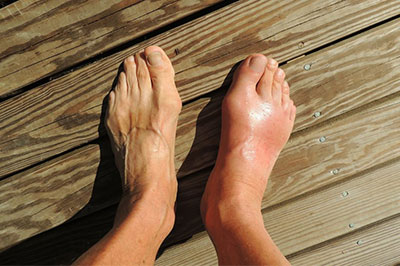
How do you know if you have a bunion? You may notice a visible bump on the inside of your foot which can start to form callus. You may start experiencing pain at the big toe joint with standing/walking or even from rubbing of shoes. The big toe joint can become stiff with restricted motion. Other symptoms include numbness to the toe, swelling in the area and redness from irritation.
There are a lot of treatment options available for bunions. Some at-home remedies include soaking in warm Epsom salt water to help soothe the painful, irritated foot. Ice, massage therapy, and NSAIDS can all help as home remedies as well. Padding and splinting can help prevent pain and irritation from occurring as well as stretching.
If at home remedies aren’t enough to resolve your pain, seeing a professional can help. Depending on the stage of your bunion deformity, it may be able to be treated conservatively. Some conservative treatment options include steroid injections, laser therapy, ultrasound therapy, orthotics to help realign the foot and physical therapy. There are surgical options for treating bunions as well. Don’t live in pain or embarrassment! Come see us today for your customized treatment plan!
Fungus Among Us

Are your nails discolored? Are they turning white, yellow, or brown and/or progressively thickening? You may have a fungal infection! Fungus is the primary cause of nail deformities. Other causes can include bacterial or yeast infections and trauma to the nail plate. It’s important to recognize these changes in the early stages in order to successfully treat the infection.
Fungus: A fungal nail, also known as onychomycosis, is one of the most difficult conditions in the lower extremity to treat, and often times reoccur even after it is effectively treated. Fungi are microscopic organisms that typically live in warm, dark, moist environments–for example the inside of your shoe. Hyperhydrosis, or excessive sweating in the feet, as well as living in humid conditions can further aid in causing a fungal infection. It can easily spread to your skin via microscopic tears or to the nail via damage or lifting of the nail, many times unnoticeable. It begins as a small white, yellow or brown spot that progressively grows and spreads. People with compromised immune systems, as well as people with poor circulation, such as diabetics, are more susceptible to fungal infections.
Manicures/Pedicures: AVOID! Period. Nail salons are a key source to most fungal infections. Many nail salons (including the fancy, high-end ones!!) fail to sterilize their tools and equipment properly. If you find you’re absolutely unable to avoid nail salons, bring your own tools. You can easily purchase a set from your local drugstore. Also, don’t let your technician cut or push back your cuticles, as this is a portal of entry. Lastly, avoid artificial nails, which tend to be the perfect place for a fungus to harbor.
Treatment: Your Podiatrist will diagnose your nails by clinical observation and possibly taking a biopsy. There are three main types of treatments available, topical medication, oral medication, and laser therapy. The most effective treatment is a combination of these therapies. Topical medications have the lowest cure rate, so don’t waste your money buying over-the-counter products, unless you’re in the very early stages of the infection. Visit your doctor for more information about treatment options.
Tips: Wear breathable socks to allow proper ventilation of your feet and change them frequently, especially if you perspire. It is also important to disinfect your shoes on a daily basis-using Lysol or anti-fungal foot powder as well as allowing your shoes to sit in sunlight will aid in this. Control perspiration of your feet with over-the-counter or prescription strength antiperspirant. For excessive amounts of sweating, contact your podiatrist for other treatment modalities, such as Botox injections in your feet. Avoid walking barefoot in public showers, swimming pools, etc. Finally, keep your nails cut short and filed down as low as possible.
The Diabetic Foot Check-Up
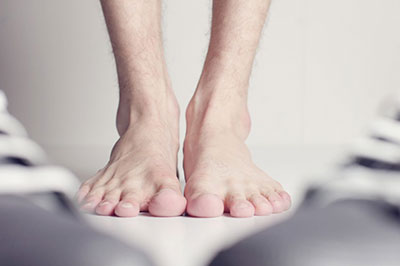
The American Diabetes Association estimates that one in five people with diabetes who seek hospital care do so for foot problems. Diabetes can affect the nerves and vessels in your feet and lead to severe and chronic problems and could even result in a foot or leg amputation. Therefore, it is crucial to check your feet daily and visit your Podiatrist every 6 months if you are diabetic.
Inspect your feet daily. If you are unable to bend, utilize a mirror or ask a family member to check the soles of your feet for any cracks or openings. Areas of callus/corns are due to an increase in pressure to those points which can ulcerate–accommodative shoes/orthotics can help prevent them from occurring. Check in between the toes for fissures or discoloration. It is common for diabetics to develop a fungal infection in the interspace due to the moist environment.
Protect your feet. Wear cotton, diabetic socks and change them frequently throughout the day. Never go barefoot, even in your household. Wear accommodative, well fitting shoes to avoid friction which can lead to blisters and ulcers. Medicaid/Medicare patients may be eligible for a free pair of diabetic shoes yearly, so check with your local podiatrist for more information. Inspect the inside of the shoes before putting them on, and inspect your socks after you take them off for any signs of blood or fluid.
Trim your nails. Trimming your nails frequently can prevent pressure points in your toes. Utilizing pliers-style nail nippers allows for more control than a traditional nail clipper and are sold in all drug stores for approximately $5. Remember to cut the nails at a straight edge, not curved, to prevent ingrown nails. If you have poor vision, back problems, loss of sensation, or a history of ulcers, seek professional nail care from your local Podiatrist.
Wash your feet with warm water and mild soap daily. You can test the temperature of the water with your elbow if you have loss of sensation in your feet. Make sure to dry your feet thoroughly, especially in between the toes. Apply cream daily to the entire feet to prevent cracks or fissures and avoid applying cream in between the toes.
Keep blood flowing to your feet. While sitting for long periods, elevate the extremities and perform simple exercises to stretch the muscles and increase the blood flow to your feet. Some examples are to wiggle your toes or move your ankles back and forth repetitively.
Lastly and most importantly, control your blood sugar. Check your levels daily and take your medications as instructed on time. Keep record of your blood sugar and report it to your primary care physician so they can manage you accordingly. Never be afraid to ask questions and make sure your doctors are all aware of any changes in your body.








